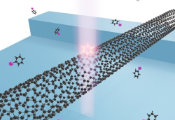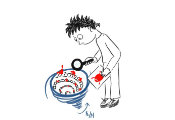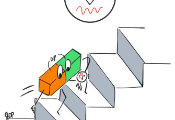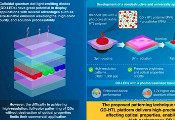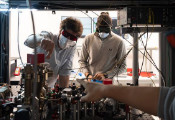Researchers From Startups, Government Labs, and Academia Develop New Techniques for Making Qubits Out of Erbium
Qubits are the building block for quantum technology, and finding or building qubits that are stable and easily manipulated is one of the central goals of quantum technology research. Scientists have found that an atom of erbium—a rare-earth metal sometimes used in lasers or to color glass—can be a very effective qubit.
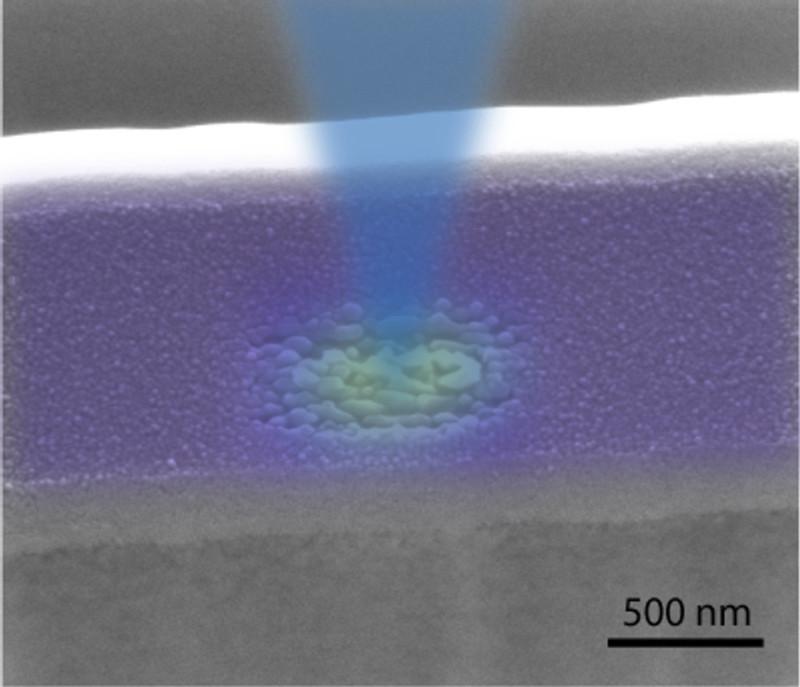
To make erbium qubits, erbium atoms are placed in “host materials,” where the erbium atoms replace some of the material’s original atoms. Two research groups—one at quantum startup memQ, founded by UChicago Pritzker Molecular Engineering alumnus Manish Singh, and one at the U.S. Department of Energy’s Argonne National Laboratory—have used different host materials for erbium to advance quantum technology, demonstrating the versatility of this kind of qubit and highlighting the importance of materials science to quantum computing and quantum communication.
The two projects address challenges that quantum computing researchers have been trying to solve: engineering multi-qubit devices and extending the amount of time qubits can hold information.
“The work that these two efforts have done really highlights how much materials matter for quantum technology,” said F. Joseph Heremans, an Argonne staff scientist and UChicago CASE scientist who was involved with both projects. “The environment the qubit resides in is just as critical as the qubit itself.”
Startup memQ selectively activates erbium qubits, making it easier to control multi-qubit devices
Erbium is popular as a qubit because it can efficiently transmit quantum information over the same kind of optical fiber that channels internet and phone lines; its electrons are also arranged in such a way that it’s particularly resistant to the kind of environmental changes that can cause a qubit to lose its information.
But the growth process that inserts the erbium into the host material scatters the atoms throughout the material in a way the scientists can’t precisely control, which makes it difficult to design multi-qubit devices. In a completely novel technique, scientists at memQ have discovered a work-around: “activating” only certain erbium atoms with a laser. The work was recently published in the journal Applied Physics Letters.
“We're not actually placing the erbium in specific spots, the erbium is scattered throughout the material,” said Sean Sullivan, CTO and co-founder of memQ, which is a graduate of Duality, the quantum startup accelerator co-led by the Polsky Center for Entrepreneurship and Innovation at the University of Chicago and the Chicago Quantum Exchange along with founding partners the University of Illinois Urbana-Champaign, Argonne, and P33. “But by using a laser, we can change the crystal structure in a particular area, and that changes the properties of erbium in that area. So we’re selecting which erbium to use as qubits.”
The technique relies on the properties of the host material, titanium dioxide (TiO2). Because of its symmetry, a crystal lattice of TiO2 has two possible configurations. An erbium atom inserted into the lattice will communicate at a different frequency depending on the configuration of TiO2 it sits in.
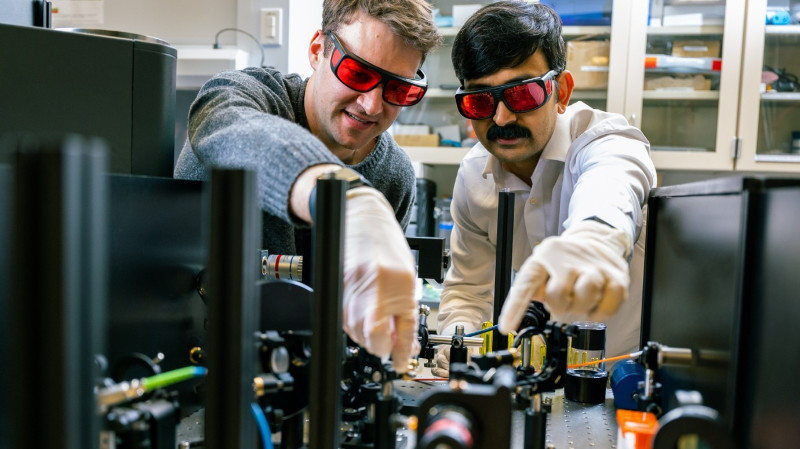
In memQ’s technique, erbium is scattered throughout a film of TiO2 that is in one configuration. Then, a high-powered laser is focused on the crystal around certain erbium atoms, permanently distorting the TiO2 into its other configuration in those locations only. Now, the erbium atoms selected by the laser can all communicate at the same frequency, separate entirely from the others.
The new procedure represents a significant advance in this area of quantum technology, known as solid state technology.
“You can’t use qubits in 100 random locations to build something useful,” said Manish Singh, CEO and co-founder of memQ. “With our platform, we can pick which erbium we want to use in the layout that we want to use them, a capability which has evaded the solid state community for a long time.”
Argonne scientist achieves long erbium qubit coherence times
A crucial measure of a qubit’s effectiveness is its coherence time: the amount of time it can retain quantum information. This is especially important for qubits intended for use as quantum memory, the quantum equivalent of classical computer memory. But coherence is very fragile—a qubit can lose coherence from interacting with something in its environment, such as air or heat.
Erbium atoms can retain quantum information using their electrons, which have a property called “spin.” A nucleus, the cluster of protons and neutrons at the center of an atom, also has “spin,” and the spins of electrons and nuclei can influence each other. A common way for an erbium qubit to lose its quantum information is if its electron spin interacts with a nuclear spin from one of the atoms around it.
For this reason, Argonne researcher Jiefei Zhang sought out a host material for erbium that had the lowest possible nuclear spin, but that could also be feasibly fabricated with more traditional silicon technologies. She found it with a different oxide, this time of a rare-earth element: cerium dioxide, also known as ceria (CeO2).
Cerium is the most abundant rare-earth element, and is used as an oxidizing agent and catalyst in industrial chemistry. Unlike TiO2, which has multiple possible structural configurations, CeO2 has only one, and is extremely symmetric. Because of this, erbium qubits in CeO2 are more stable.
“Two different erbium qubits in ceria will see the same crystal environment,” Zhang said. “And so it's very easy to control them simultaneously because they will act in a very similar way.”
Notably, the novel localization technique developed by memQ is not possible with a highly-symmetric crystal structure like CeO2—but Zhang was able to see longer coherence times from the erbium qubits, with potential for even longer as they continue to develop the experiment. The work can be found on the preprint server arXiv.
“There are definitely pros and cons for each material, and that’s very common in quantum,” Zhang said.

